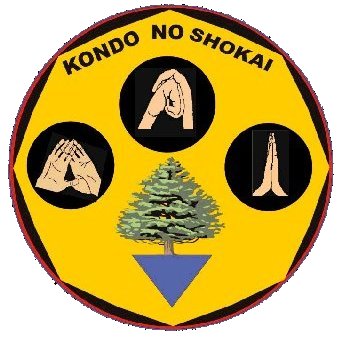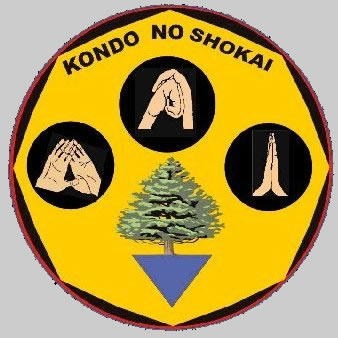|
|
Kondo No Shokai Kondo
No Shokai Seal |
|

Members of
the Kondo No Shokai are entitled to wear our patch and encouraged to display it
in their dojo.
Shapes - Traditionally,
circles represent endlessness. The martial tradition expressed through the
karate of
The pine
tree symbolizes all schools of karate that recognize the Chinese and Okinawan ancestry of their art.
The
equilateral triangle represents the influence of the Trias
family and the goal of equal amounts of power, speed and form.
Three
symbolic hand positions (mudra) represent the ethics
of karate practitioners:
1. At the
left of the pine tree are two open hands (kaishu)
meaning, "I come bearing no weapons"
2. Above
the pine tree is a right fist covered by a left-hand (hoken)
meaning, "Karate is my secret"
3. At the
right of the pine tree are two hands in the praying position (kigan) meaning, "God guide me in my use of
karate."
Colors -
Green symbolizes nature, youth, and renewal of life. Golden yellow signifies
the color of the Sun, a source of energy and prosperity. Red represents health,
courage and action. Blue denotes the vastness of martial arts. Copper reminds
us that all people of good character may study karate Black is associated with
fullness of life, knowledge and finally, wisdom.
Words -
According to R. A. Trias' Karate is My Life, Kondo No
Shokai "... means New Pine Tree Society." As such, membership in the
Kondo No Shokai is open to any karate style members whose tradition includes
reference to the pine tree symbol.

